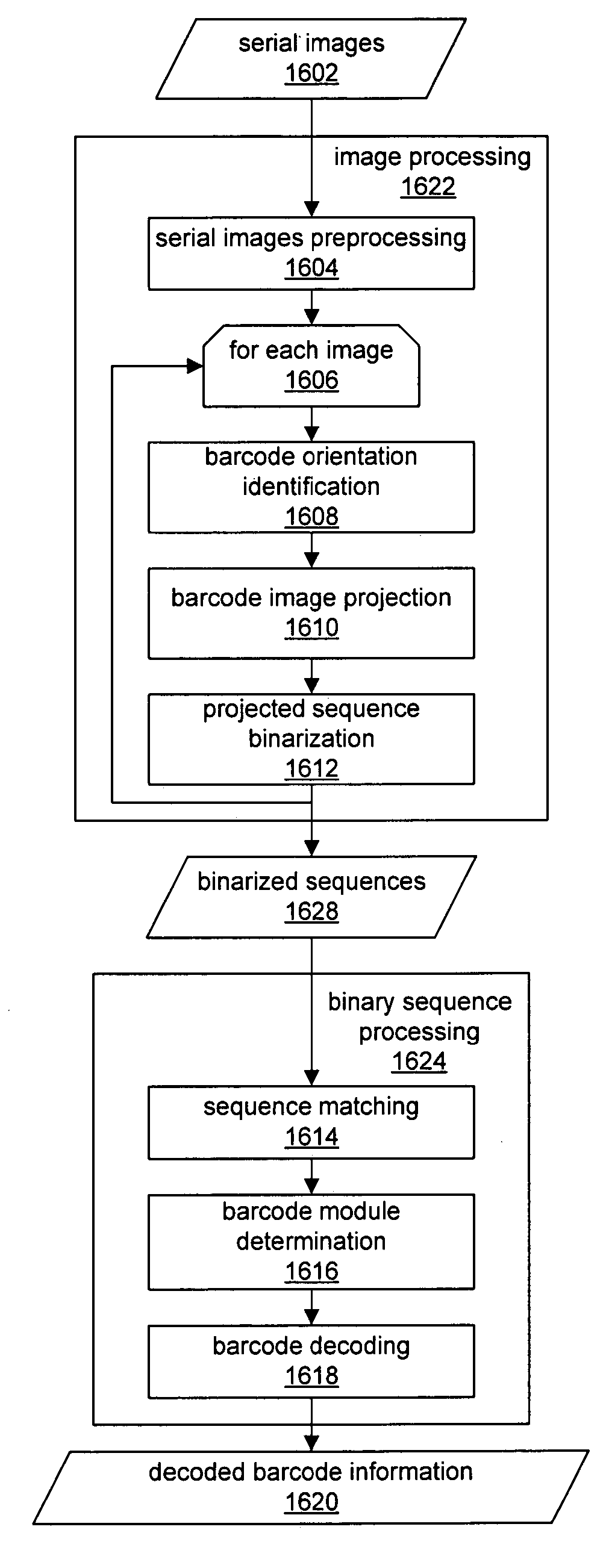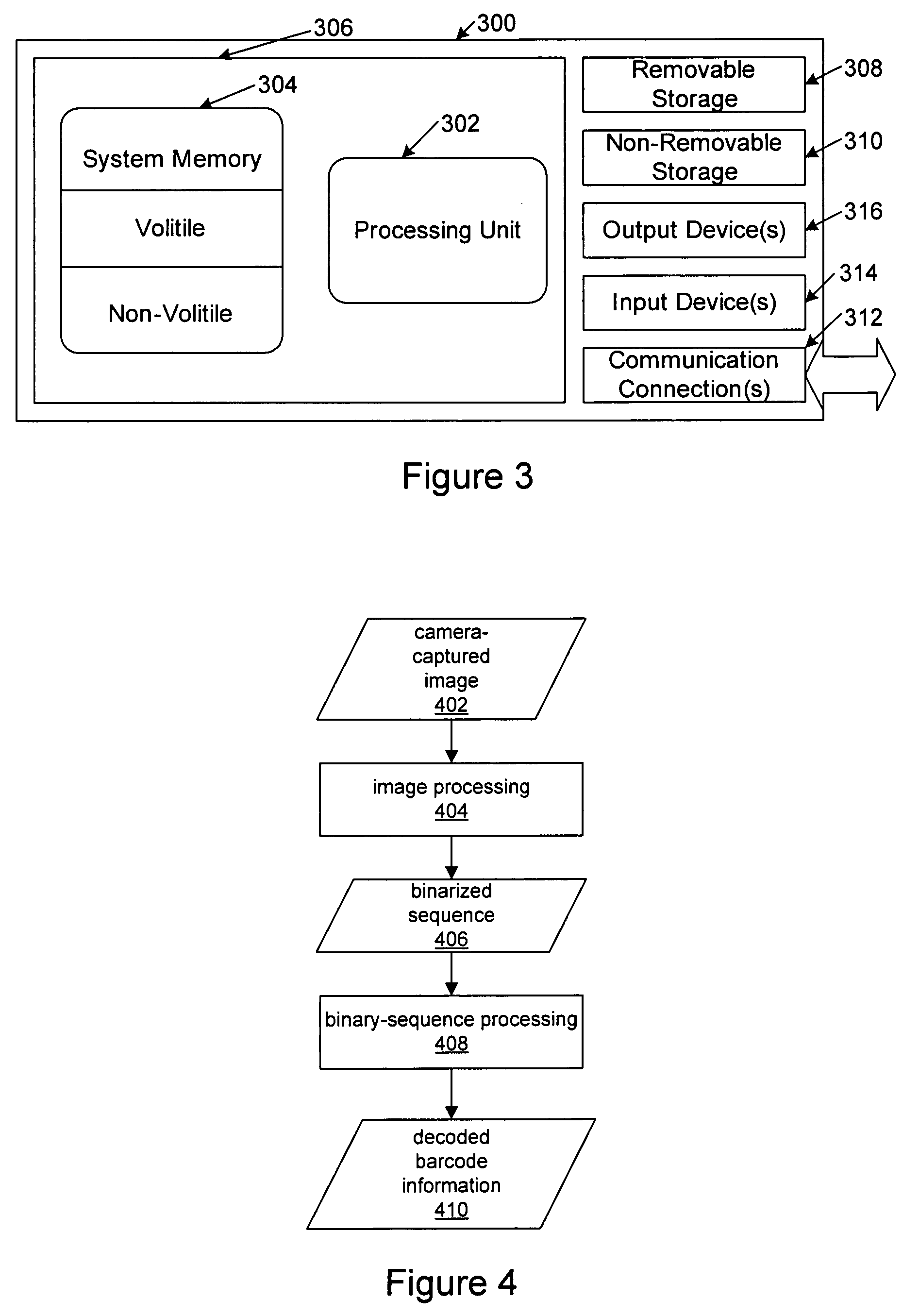Camera-based barcode recognition
a barcode recognition and camera technology, applied in the field of camera-based barcode recognition, can solve the problems of large form factors, complicated optical and mechanical subsystems, and high price, and achieve the effect of enhancing the contrast between bars and spaces and reducing nois
- Summary
- Abstract
- Description
- Claims
- Application Information
AI Technical Summary
Benefits of technology
Problems solved by technology
Method used
Image
Examples
Embodiment Construction
I. Exemplary Operating Environment
[0033] With reference to FIG. 3, an exemplary system for implementing the invention includes a computing device, such as computing device 300. In its most basic configuration, computing device 300 typically includes at least one processing unit 302 and memory 304. Depending on the exact configuration and type of computing device, memory 304 may be volatile (such as RAM), non-volatile (such as ROM, flash memory, etc.) or some combination of the two. This most basic configuration is illustrated in FIG. 3 by dashed line 306. Additionally, device 300 may also have additional features / functionality. For example, device 300 may also include additional storage (removable and / or non-removable) including, but not limited to, magnetic or optical disks or tape. Such additional storage is illustrated in FIG. 3 by removable storage 308 and non-removable storage 310. Computer storage media includes volatile and nonvolatile, removable and non-removable media imple...
PUM
 Login to View More
Login to View More Abstract
Description
Claims
Application Information
 Login to View More
Login to View More - R&D
- Intellectual Property
- Life Sciences
- Materials
- Tech Scout
- Unparalleled Data Quality
- Higher Quality Content
- 60% Fewer Hallucinations
Browse by: Latest US Patents, China's latest patents, Technical Efficacy Thesaurus, Application Domain, Technology Topic, Popular Technical Reports.
© 2025 PatSnap. All rights reserved.Legal|Privacy policy|Modern Slavery Act Transparency Statement|Sitemap|About US| Contact US: help@patsnap.com



